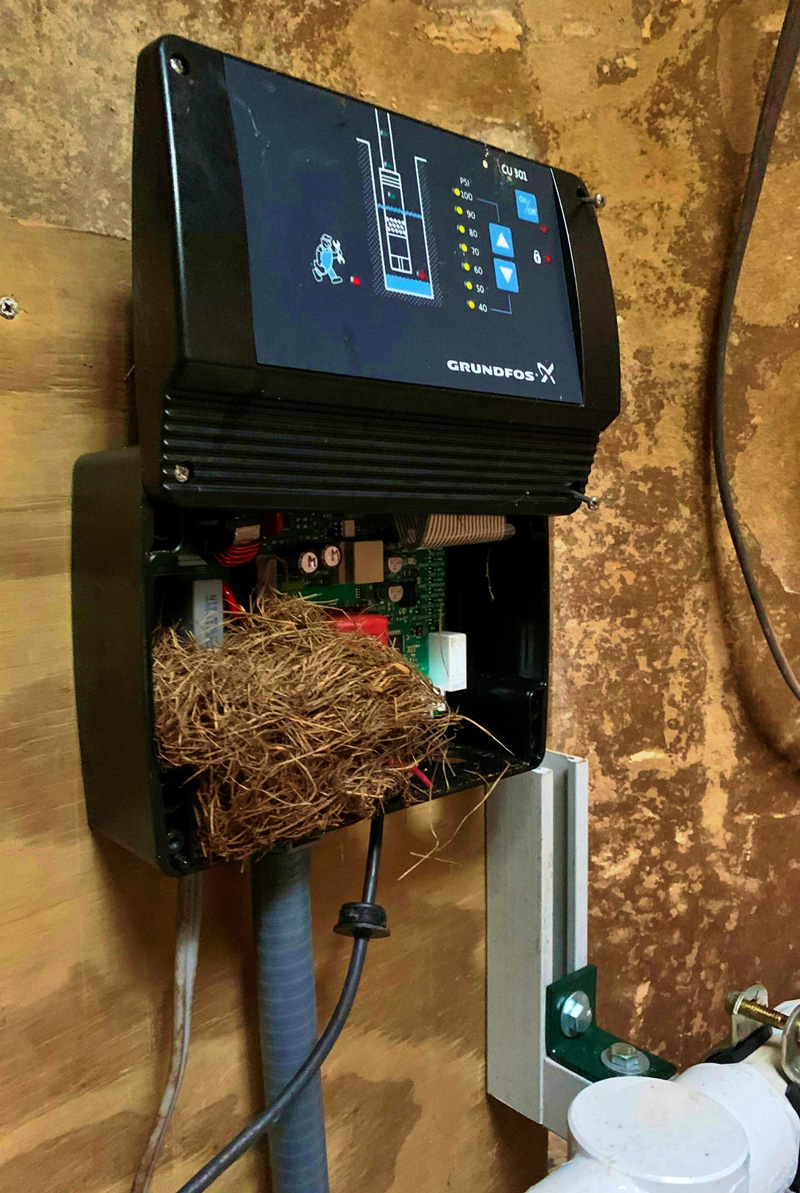Back Home by Chris Hardie
» Download this column as a Word document
» Download photos that accompany this story
» Chris Hardie’s headshot
Living in the country without the municipal services provided to our urban friends can be a blessing or a curse.
Country folk don’t need to pay water and sewer bills, or worry about sidewalk fee assessments. But we need to rely on our own water well and sanitary system, which depending on age and reliability can present sometimes-expensive challenges.
When we moved back to the farm in 2006 and remodeled my great-grandparents’ house, one of the first orders of business was to put in a new septic system. The existing system consisted of an old metal tank buried in the ground with more or less a trench that was covered with some rusty sheets of tin. Let’s just say it was not up to code.
Because we were opening a lodging facility with five bedrooms — which is a critical factor in determining the size of a sewer system — we went through a significant upgrade that will hopefully last the rest of our lives.
But we didn’t do anything with our well, which was original to the homestead dating back to the earlier part of the 1900s. It was once powered by a windmill made by the ubiquitous Aermotor Windmill Co., which was emblazoned on the tail. The company started making windmills in 1888 and still makes them today.
The farm’s windmill was used at least through the end of the 1940s because electricity didn’t arrive until then. The mill would draw water from the well through pipes that went above the ground, then fill an underground rock cistern in the hillside. The cistern would provide water to the house and the barn through gravity. The water — in theory — would drain back down into the well when the pump shut off to prevent it from freezing.
Eventually an electric pump was installed but we continued to use the well. The pressure tank sat on the bottom of the cistern. The cistern still holds water, which we learned the hard way a few years ago when the metal pressure tank sprang a leak and the cistern filled. Even though the fuse box was underwater it never shorted out.
My parents drilled a newer greater-capacity well in the early 1970s to handle a larger dairy herd but the old well has much-better water. There is little iron — a rarity in these parts — and the taste is delicious.
We’ve had some maintenance issues the past few years with the old well design. Its 4-inch pipe didn’t provide enough water when we added an event center so we needed to drill a new well. I had the new well drilled close to the old one with the hopes we could hit the same excellent water vein. They came close, though we’ve needed to add additional filtration to deal with sand and iron issues. We now have a state-of-the-art country well with a computer-driven water-monitoring system that provides constant pressure without the need for a tank.
But new doesn’t mean infallible. Recently I got up in the middle of the night to answer the call of nature — which seems to happen more as I grow older. I flushed the toilet only to be greeted by the sound of a trickle of water refilling the tank. I turned on the bathroom tap and the water stopped running.
Because we had no guests I was content to wait until daylight to investigate. Just after dawn broke I checked a few more taps both inside and outside. Nothing. I checked the breaker box. All good.
Did I mention we have a state-of-the art water-monitoring system powered by a computer? That monitor is installed at the bottom of our ancient rock cistern. So I removed the covering, powered the flashlight on my phone and descended the 12 feet to the bottom.
The monitor was dead — no lights. I pressed the power button. Nothing. It was still plugged in but clearly not working. Using the age-old method of unplugging and plugging it back in, I kept my fingers crossed. But there was only darkness at the bottom of a pit.
So I climbed back up to daylight and texted my plumber. He replied in a few minutes that he’d be there as soon as possible. Thankfully I had enough water in a pitcher that I could make my morning coffee to partially compensate for the bad morning.
I was gone when the plumber arrived but I had steeled myself for the worst. A new computer system at the very least, perhaps a pump. But what the plumber found when he took off the cover to the monitor was not a technology issue but a trespassing issue caused by a squatter.

A mouse had managed to wriggle its way through a crack where the electric cord feeds in and decided to take residence inside the monitor by building a massive nest. It was this ball of grass and weeds that shorted out the system.
Once the nest was removed the system booted back up. The rodent entrance was sealed and we were back in the water business.
I’m not surprised such a small critter could cause a major problem. I heard the cause of many power outages is sometimes a larger cousin of the mouse — a squirrel — wreaking havoc in a substation.
The pesky mouse will need to find another house.
Chris Hardie spent more than 30 years as a reporter, editor



